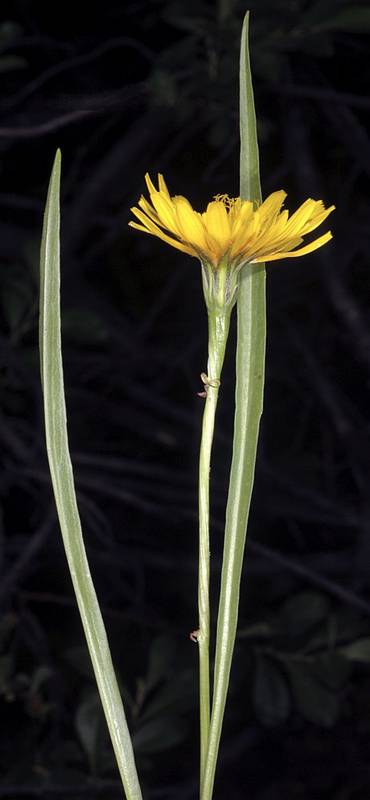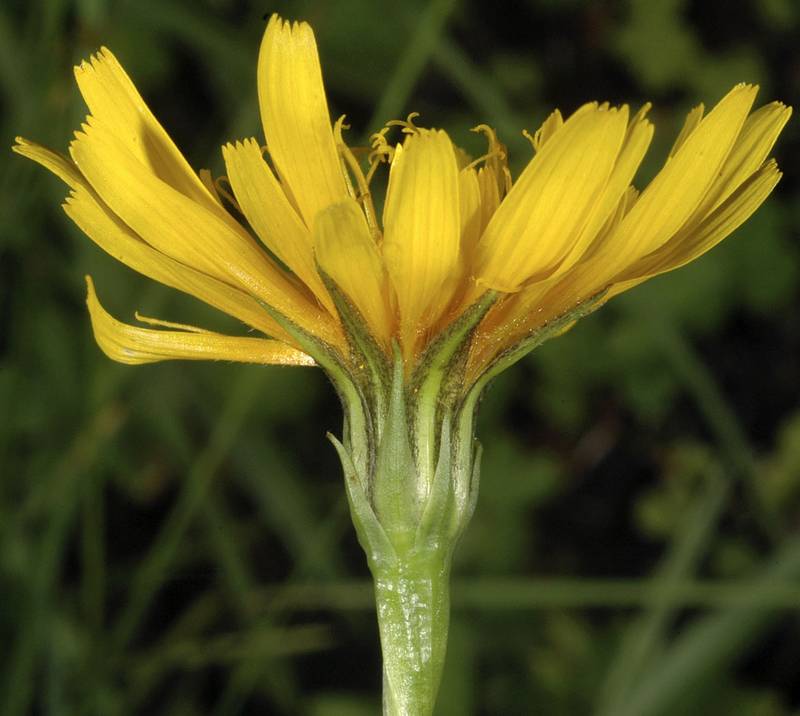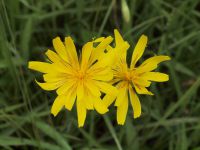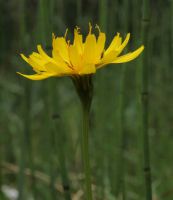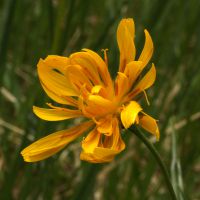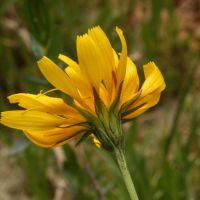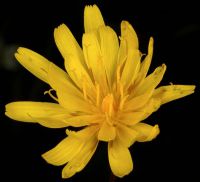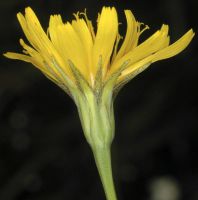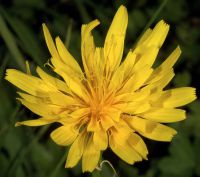Distribution: Occurring west of the Cascades crest in Washington; southern Alaska to northern California.
Habitat: Sphagnum bogs and wet meadows in the mountains.
Flowers: June-August
Origin: Native
Growth Duration: Perennial
Conservation Status: Sensitive in Washington (WANHP)
Pollination: Bumblebees, bees, flies, beetles
Glabrous, scapose perennial with milky juice, the stem 1-5 dm. tall.
Basal leaves elongate, entire or with a few backward-pointing teeth, 5-25 cm. long and 2-12 mm. wide, gradually tapering to the apex.
Heads solitary, the involucre bell-shaped, 10-13 mm. high, with a row of short bracts around the involucre bracts; flowers all ligulate, yellow, perfect; pappus of brownish, barbellate capillary bristles that are thickened and united at the base.
Achenes columnar, truncate, 5-6 mm. long, about 10-ribbed.
Publication: Jahresber. Pollichia. 22–24: 310. 1866.
Apargidium boreale (Bong.) Torr. & A. Gray [HC]
Scorzonella borealis (Bong.) Greene
PNW Herbaria: Specimen records of Microseris borealis in the Consortium of Pacific Northwest Herbaria database.
WA Flora Checklist: Microseris borealis checklist entry.
OregonFlora: Microseris borealis information.
E-Flora BC: Microseris borealis atlas page.
CalPhotos: Microseris borealis photos.
USDA Plants: Microseris borealis information.


